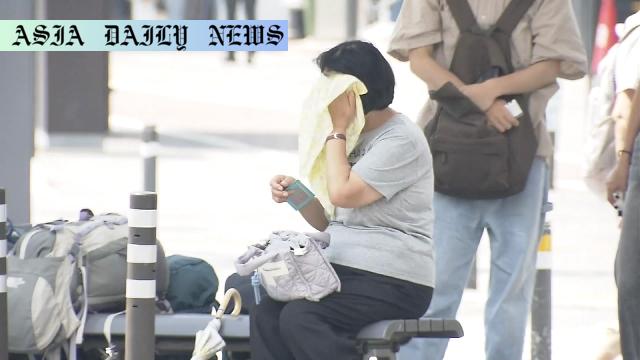Heatstroke: Public urged to prevent health issues as Japan records extreme temperatures with warnings issued across the nation.
- Key Point 1: Public urged to take measures against heatstroke amid soaring temperatures across Japan.
- Key Point 2: Record temperature of 41.8°C recorded in Isesaki City, with heat alerts covering vast regions of the country.
- Key Point 3: Authorities recommend using air conditioners, hydrating regularly, and avoiding outdoor activities during peak heat.

Japan Records Highest Temperatures in History
In a historic wave of intense heat, Japan has recorded its highest-ever temperature of 41.8 degrees Celsius in Isesaki City, located north of Tokyo. This unprecedented heatwave comes as temperatures soar across the Kanto region and beyond, with over 14 observation points logging temperatures above 40 degrees Celsius. Many cities, including Tokyo, Kyoto, and Osaka, are grappling with severe heat, prompting country-wide heatstroke alerts from the Japan Meteorological Agency. The situation has placed significant stress on daily life, urging both the government and citizens to prioritize healthcare and preventive measures.
Heatstroke Measures and Health Recommendations
Amid these historic temperatures, Japanese officials have strongly emphasized the need for preventive measures to guard against heatstroke. Recommendations include utilizing air conditioning systems, staying hydrated with frequent water and salt intake, and avoiding strenuous outdoor activities during peak heat hours. Public service announcements across Japan stress the importance of these practices as the nation confronts its most pressing environmental challenge this summer. Elderly individuals and children are particularly vulnerable, and caretakers are advised to monitor their health closely.
Recognition of Climate Impacts and Future Strategies
As Japan faces this alarming heatwave, experts have shifted focus towards the underlying causes, including climate change and urban heat island effects. This crisis has heightened awareness of environmental hazards and stressed the need for more sustainable urban planning and heat mitigation strategies. Policymakers are now exploring long-term solutions ranging from enhanced disaster response systems to promoting green infrastructure to ensure cities are prepared for future temperature surges. This serves as a wake-up call for nations worldwide to confront climate challenges proactively.



Commentary
Understanding the Urgency of Heatstroke Prevention
This month, Japan finds itself at the center of an environmental crisis as soaring temperatures shatter historical records. The urgency to address heatstroke is palpable, with relentless public advisories emphasizing preventive measures like hydration and rest. It’s crucial for everyone, especially vulnerable populations, to heed these warnings as heat-related illnesses can escalate quickly. Neglecting such health advisories, even for a day, can have grave consequences given the severity of the current heatwave.
The Ripple Effect of Record-Breaking Temperatures
Beyond the personal health risks, this historic heatwave underscores deeper, systemic concerns. Temperatures exceeding 40 degrees Celsius can impact energy consumption, strain resources, and exacerbate infrastructure vulnerabilities. Cities like Tokyo and Osaka, known for their density, are particularly at risk as urban heat islands amplify the effects of the summer sun. Policymakers must act with urgency by addressing both immediate health risks and the long-term effects of climate-related disasters.
The Broader Climate Change Perspective
Finally, this alarming heatwave serves as a stark reminder of the broader challenges posed by global warming. As temperatures continue to rise annually, it is incumbent upon governments, industries, and individuals to adopt sustainable practices to curb emissions and mitigate climate impact. Efforts such as expanding green spaces, revisiting energy policies, and fostering global collaboration are now more critical than ever. What Japan faces today is not an isolated event—it is a blueprint of what lies ahead for the global community unless immediate action is taken.